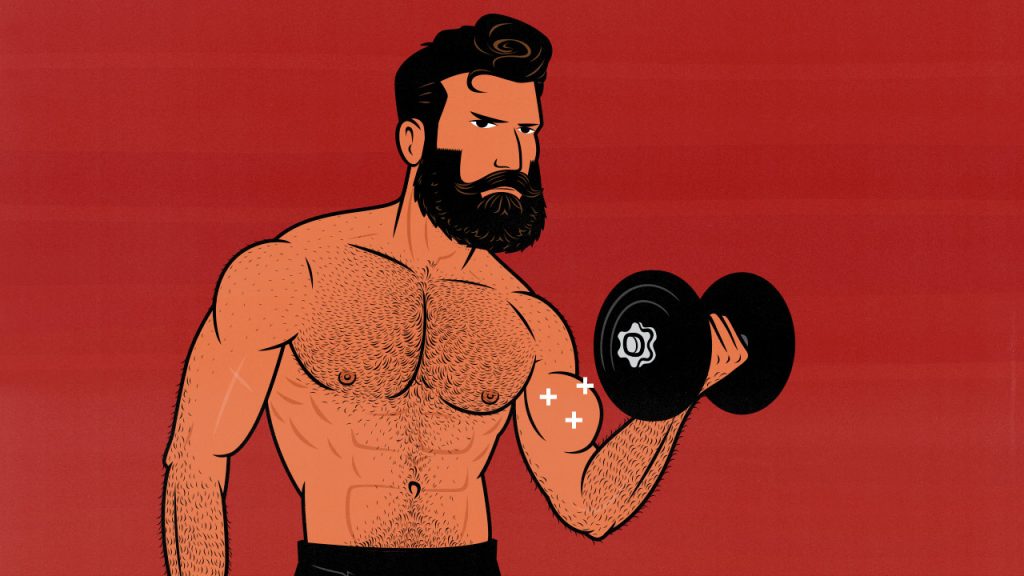
The Best Dumbbell Arm Exercises & Workout
Dumbbell exercises are fantastic for building bigger arms. They’re often better than the barbell, cable, and machine variations. You don’t need anything more.
Our main Bony to Beastly Program heavily emphasizes dumbbells. Some of our best transformations come from guys working out at home in simple dumbbell home gyms.
Arm exercises pair together well. You could quickly alternate between sets of biceps curls, triceps extensions, and lateral raises at the end of all your workouts, keeping your arms growing steadily all week long. You could also do a heartier workout focused solely on your arms. We’ll cover both approaches.
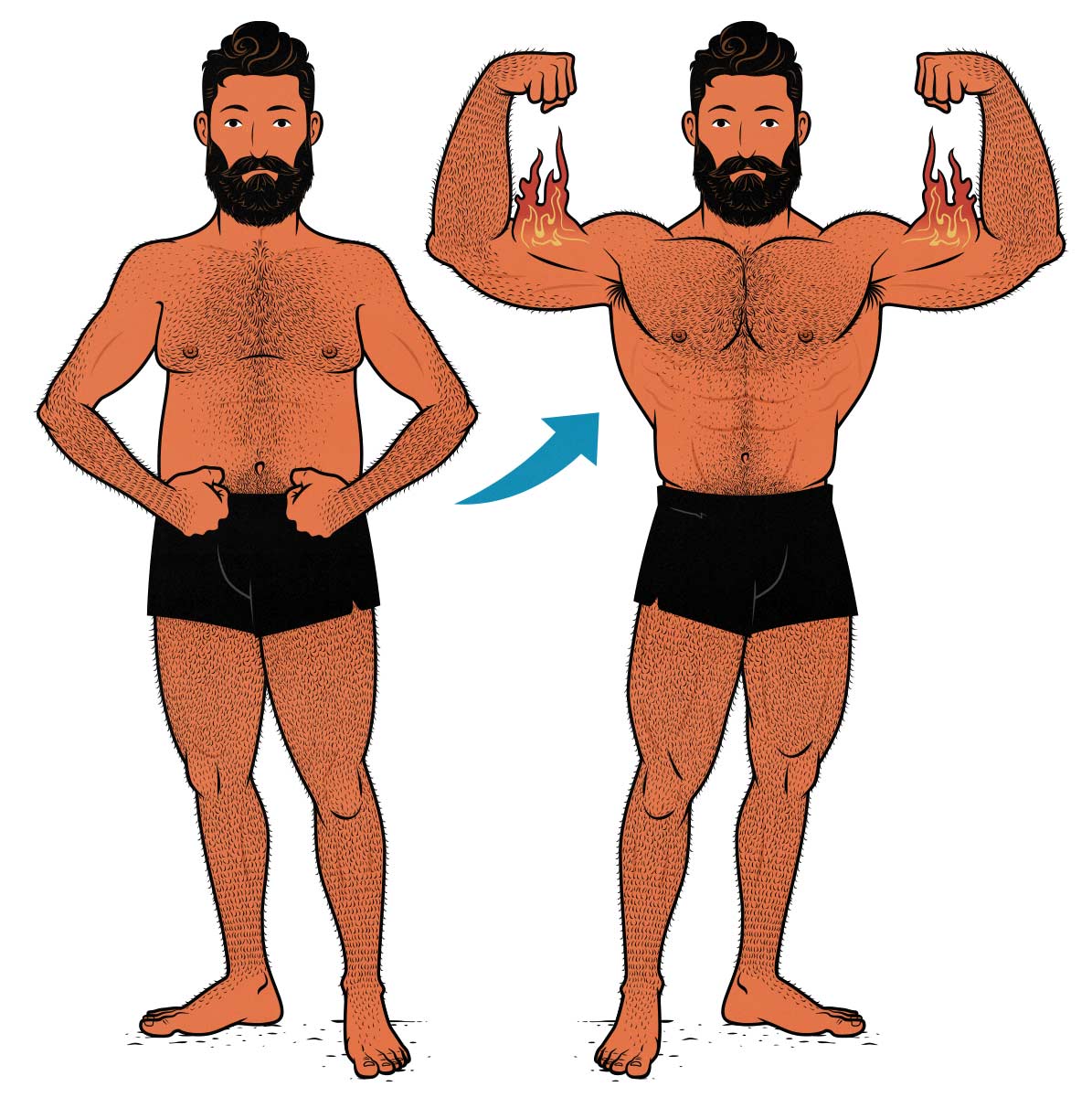
How to Train Your Arms
Here’s a diagram showing the best dumbbell exercises for your different arm muscles. Some people count their shoulders as part of their arms, so I’ve included those as well.
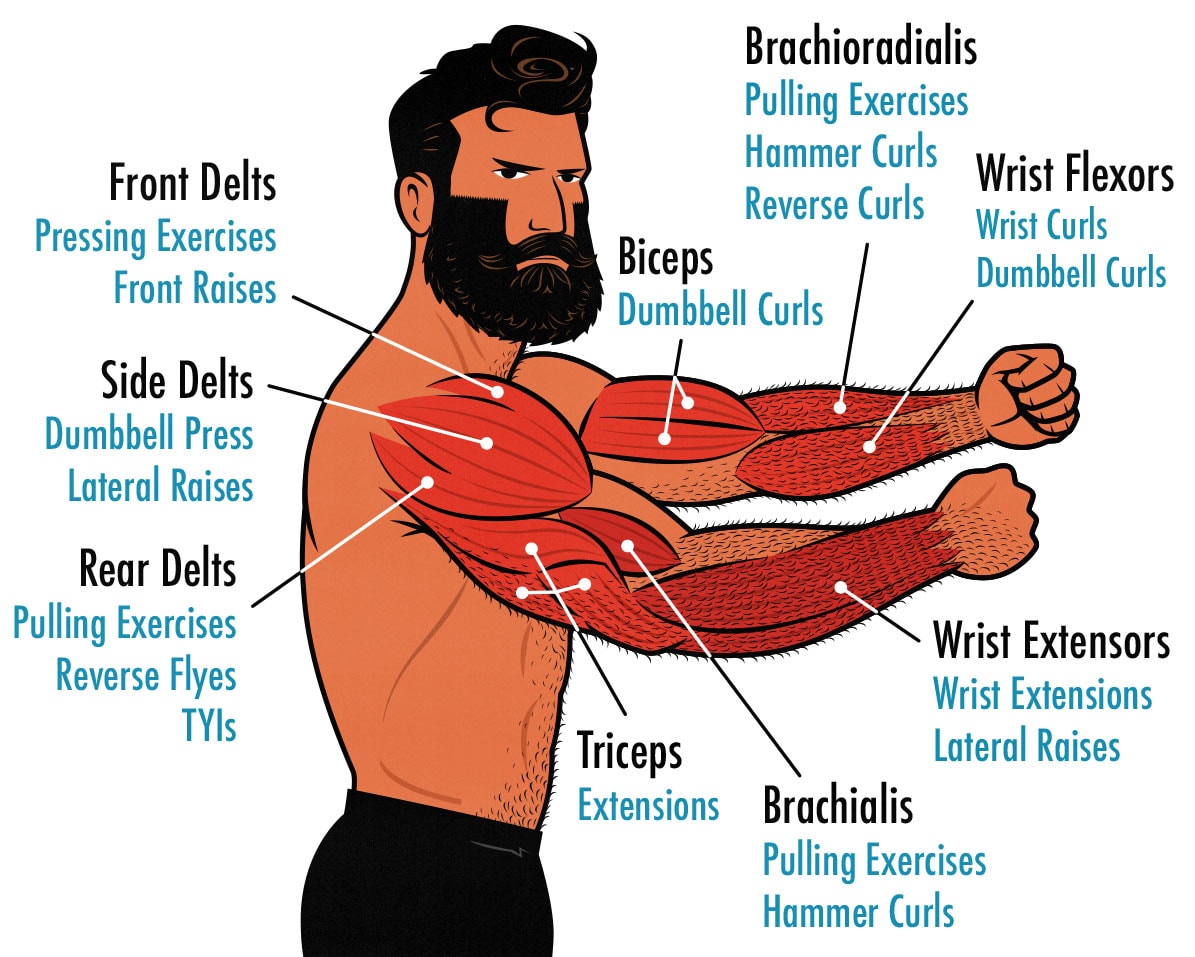
- Biceps: Dumbbell curls, concentration curls, incline curls, and lying dumbbell curls (my favourite).
- Triceps: Triceps kickbacks (worst), dumbbell skull crushers, and overhead extensions (best).
- Brachialis: Pulling exercises, biceps curls, reverse curls, and hammer curls.
- Forearms: Pulling exercises, dumbbell curls, lateral raises, reverse curls, wrist curls, and wrist extensions.
- Front Delts: Dumbbell overhead press, dumbbell bench press, and front raise.
- Side Delts: Dumbbell overhead press and lateral raise.
- Rear Delts: Pulling exercises, reverse flyes, and TYIs.
These exercises all have their pros and cons. Let’s delve a bit deeper into each of them.
The Best Dumbbell Biceps Exercises
Your biceps engage during pulling exercises, but not enough to maximize their rate of muscle growth (study). Your biceps cross the shoulder joint, so when you’re pulling things towards you, that movement prevents your biceps from fully contracting.
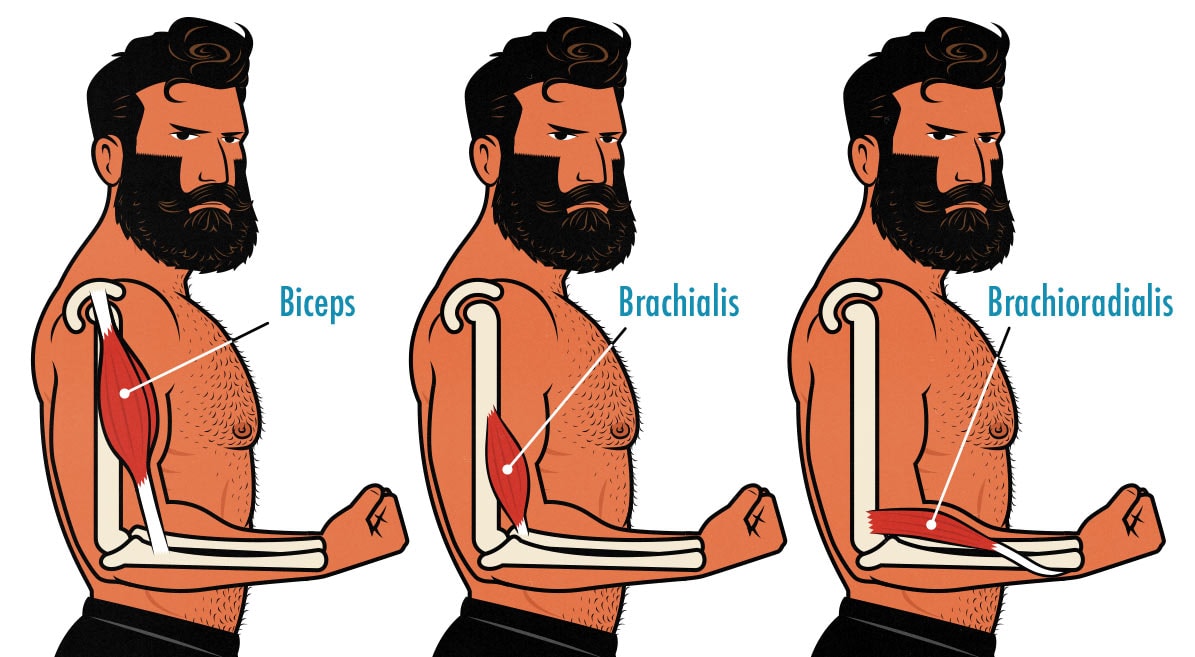
Plus, the best pulling exercises for building bigger biceps tend to be ones like chin-ups. If all you have are dumbbells, you’ll be doing exercises like rows, pullovers, and TYIs. None of those exercises are very good for your biceps.
That’s why biceps curls are so important.
The other muscles in your arms don’t care very much about movement at the shoulder joint. Your brachialis and brachioradialis are perfectly happy to help you with both rows and biceps curls. You could target them directly with hammer curls and reverse curls, but you might not need to. It’s a lower priority, anyway.
- Dumbbell Curls are the best beginner biceps exercise. They’re simple to set up, simple to do, and super easy on your joints and tendons.
- Lying Dumbbell Curls stretch your biceps out at the shoulder joint, working your biceps through a much deeper range of motion. They also improve the strength curve, making the exercise much harder at the bottom. They’re perhaps the greatest biceps exercise of all time (full explanation). They’re my favourite biceps exercise, but they aren’t for the frail of shoulder. I recommend mastering regular dumbbell curls first.
- Dumbbell Incline Curls demand less shoulder stability than lying dumbbell curls, but they also don’t challenge your biceps under as deep of a stretch. Still, they’re great if you have an incline bench.
- Concentration Curls let you rest your elbows against your inner thigh, allowing you to create a bit more resistance at the bottom of the range of motion. If you need more variation in your arm workout, these can be a great addition.
- Hammer Curls are great for your brachialis and brachioradialis (with more emphasis on your brachialis).
- Reverse Curls are great for your brachialis and brachioradialis (with more emphasis on your brachioradialis).
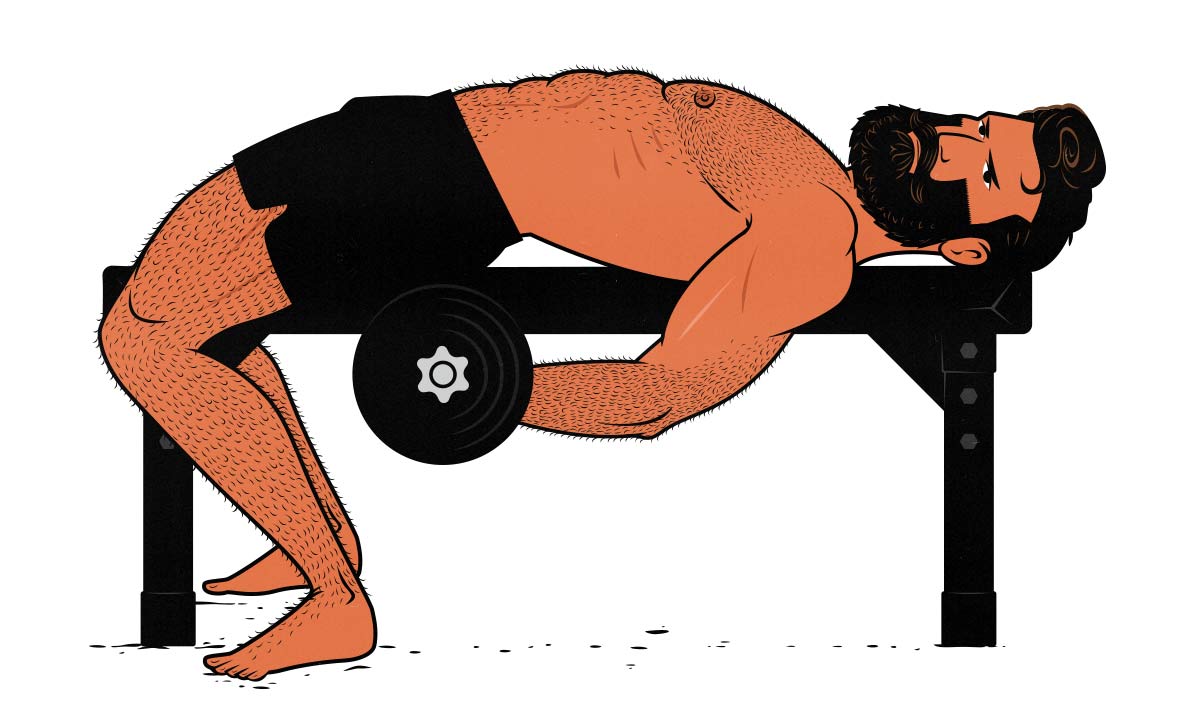
The Best Dumbbell Triceps Exercises
The long heads of your triceps cross the shoulder joint, interfering with pressing movements (study). The medial and lateral help with some pressing exercises, but not so much the dumbbell variations. That’s because if you fully flexed your triceps while doing dumbbell presses, you’d throw the dumbbells off to the side.
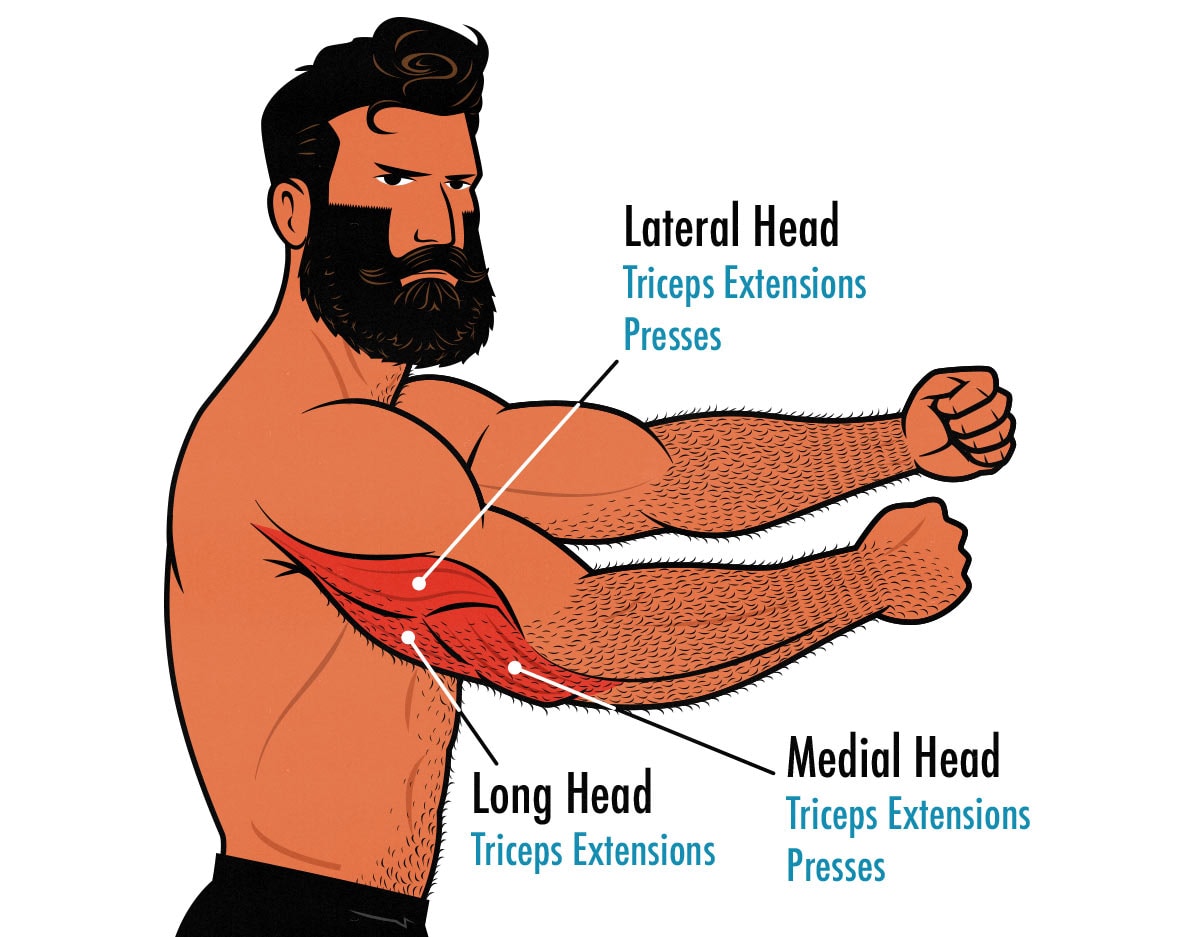
That’s why you need triceps extensions. Fortunately, dumbbell triceps extensions are amazing for stimulating muscle growth.
- Push-Ups (tutorial video) are great at working the medial and lateral heads of your triceps. They aren’t very good for the long head, but the best triceps exercises bias the long head, so that’s perfectly fine.
- Overhead Dumbbell Triceps Extensions are the best triceps exercise (study). They stretch the long heads of your triceps at the shoulder joint, training them under a deeper stretch.
- Dumbbell Skull Crushers are famous as an assistance exercise for the bench press. They’re great for building bigger triceps, too.
- Triceps Kickbacks are a bit awkward, and they don’t have the best strength curve, but they’re great for guys who get elbow pain from doing other types of triceps extensions.
The Best Dumbbell Forearm Exercises
Your forearm muscles get worked during pulling exercises, biceps curls, and lateral raises, but not always enough to maximize their rate of muscle growth. The simplest way to speed up their growth is to add a few sets of dumbbell wrist curls to the end of your arm workouts.
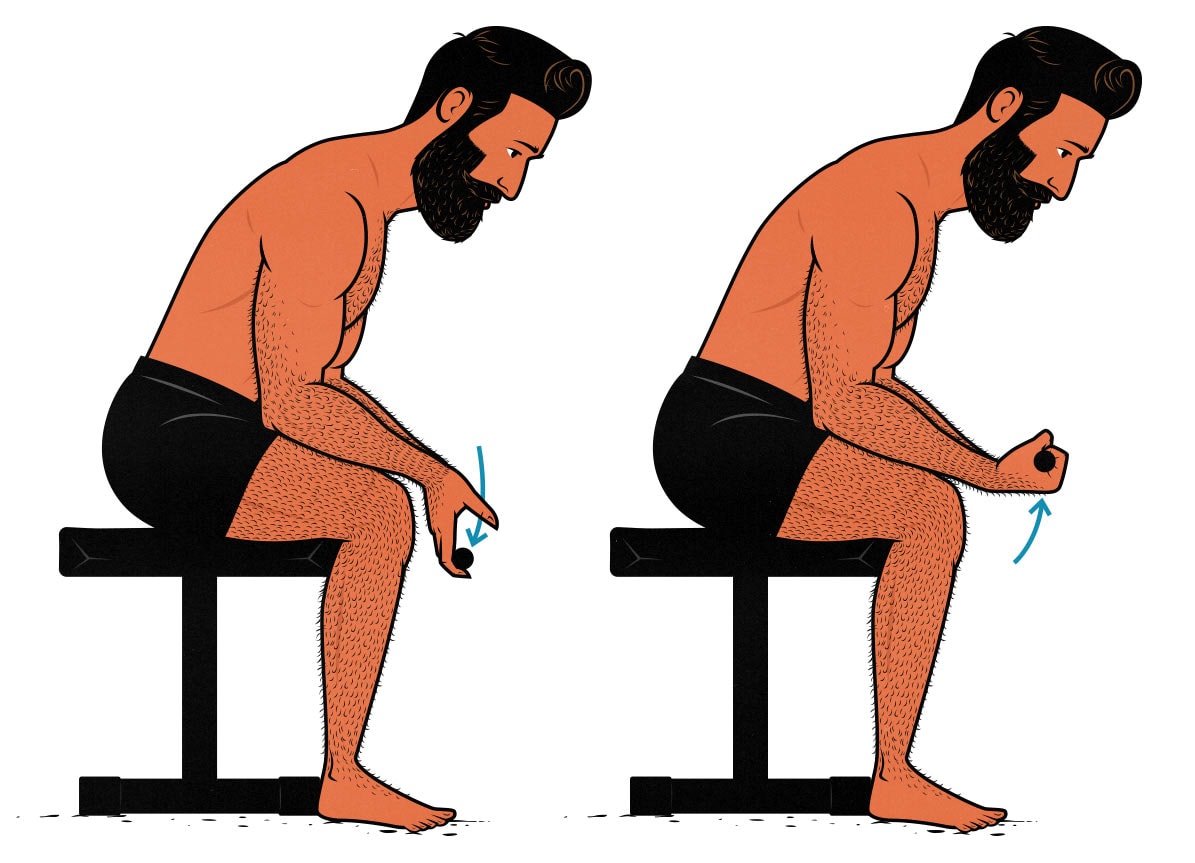
The Best Dumbbell Shoulder Exercises
Your front delts get worked along with your pressing exercises. Your rear delts get worked along with your pulling exercises. That leaves your side delts, which are only trained during dumbbell overhead presses… and probably not enough to maximize their rate of muscle growth.
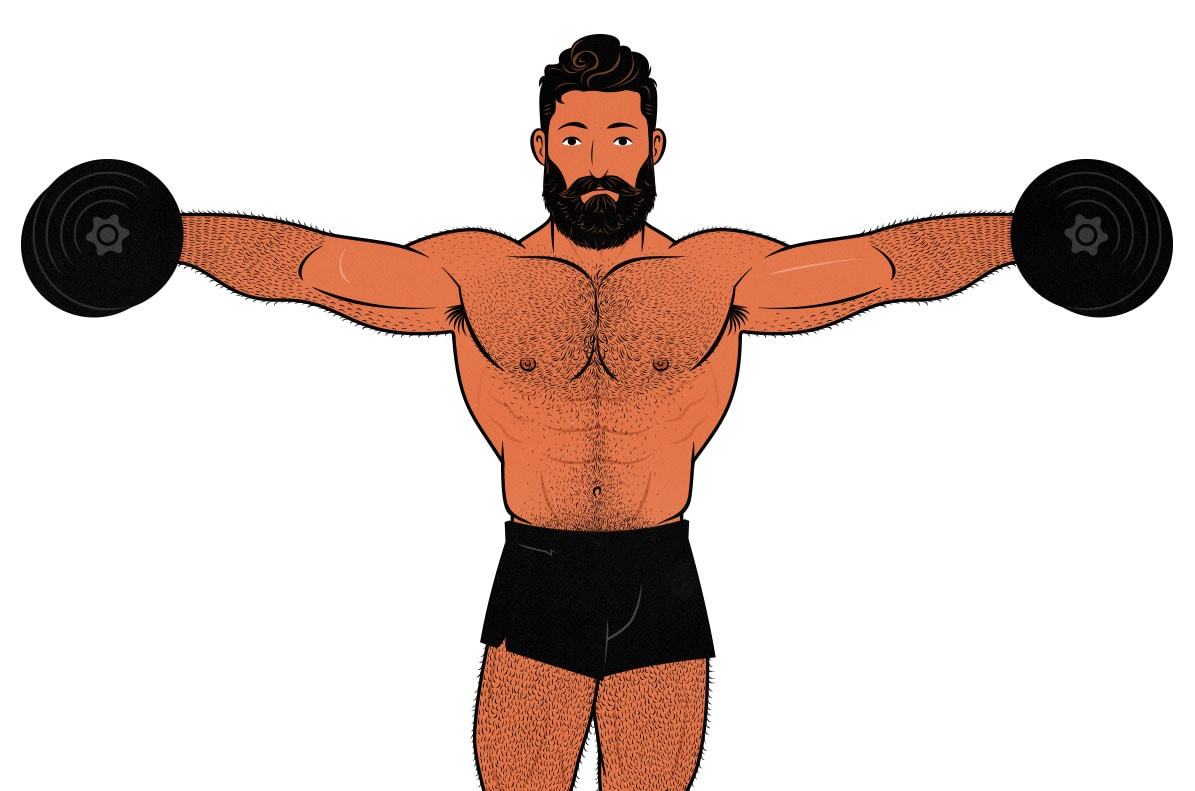
If you want to train your shoulders along with your arms, we recommend adding a few sets of lateral raises to the end of your arm workouts. You can do them standing (as shown above) or lying down on your side on a bench.
How Many Sets Should You Do for Your Arms?
Most research shows that you need around 9–22 sets per muscle per week to maximize your rate of muscle growth. That’s simple enough for simple muscles, but your arm muscles tend to cross multiple joints, preventing them from fully engaging during compound exercises. That means a set of rows doesn’t count as a full set for your biceps, nor does a set of push-ups count as a full set for your triceps.
We recommend doing around 6–12 sets per arm muscle per week. That could be as simple as doing 3 giant sets of biceps curls, triceps extensions, and lateral raises every Monday and Friday (giant set tutorial video). That’s often enough to build fearsome arms. But you can push it much further if you want to.
The Dumbbell Arm Workouts
Your arm muscles can be sorted into groups. Pulling exercises engage your biceps, brachialis, wrist flexors, and rear delts. Pushing exercises engage your triceps, front delts, and sometimes your side delts. That gives you options.
As Part of a Full-Body Workout
If you’re a beginner, the best way to build bigger arms is to follow a 3-day full-body workout routine, doing arm exercises at the end of each workout. All it takes is a few sets of curls, extensions, and lateral raises.
| EXERCISE | SETS | REPS |
|---|---|---|
| Lying Dumbbell Curls | 3–4 sets | 10–15 reps |
| Overhead Triceps Extensions | 3–4 sets | 10–15 reps |
| Lateral Raises | 3–4 sets | 10–15 reps |
These exercises train unrelated muscles, allowing you to make a giant set of them, alternating between the different exercises. A set of curls, a set of extensions, a set of lateral raises, and then back to curls (tutorial video). You can get through the entire arm workout in 5–10 minutes.
As Part of a Body-Part Split
Another option is to train your biceps and rear delts on a Pull Day or Back Day and your triceps and front delts on a Push Day or Chest Day. This approach works well for intermediate lifters who divide up their routines into 4-day, 5-day, or even 6-day workout splits.
Here are the arm exercises you might add to a Pull Day:
| EXERCISE | SETS | REPS |
|---|---|---|
| Lying Dumbbell Curls | 3–4 sets | 8–12 reps |
| Hammer Curls | 3–4 sets | 8–12 reps |
| Reverse Flyes | 3–4 sets | 10–15 reps |
| Wrist Curls | 3–4 sets | 10-15 reps |
Here are the arm exercises you could add to a Push Day:
| EXERCISE | SETS | REPS |
|---|---|---|
| Push-Ups | 3–4 sets | AMRAP |
| Overhead Triceps extensions | 3–4 sets | 8–12 reps |
| Lateral Raises | 3–4 sets | 10–15 reps |
The Dumbbell Arm Day Workout
The third option is to devote an entire workout to your arms. Arm Days are popular in Bro Splits, and that’s great. You could take it even further if you wanted. I’ve gotten some of my best arm growth from doing two full arm workouts every week.
| EXERCISE | SETS | REPS |
|---|---|---|
| Lying Dumbbell Curls | 4 sets | 6–12 reps |
| Push-Ups | 4 sets | AMRAP |
| Overhead Triceps Extensions | 3 sets | 10–15 reps |
| Hammer Curls | 3 sets | 10–15 reps |
| Seated Wrist Curls | 3 sets | 10-15 reps |
Note that we recommend doing push-ups before overhead triceps extensions. Getting blood flowing into your elbow joints and tiring out your triceps a little bit tends to make overhead triceps extensions easier on your elbows.
If you wanted to take your arm training even further, you could add a few sets of Blood Flow Restriction (BFR) training to the end of your arm workout. That’s overkill for most people, but if you’re in a hurry to bulk up your arms, it can work quite well.
Conclusion
I recommend training your arms twice per week, training them quite hard, and getting almost enough rest between sets. That might mean doing these workouts every Monday and Friday, stopping 0–1 reps shy of failure and resting 1–2 minutes between each set.
You’re free to modify the routine as you see fit. If you want to learn more about how to program workouts for muscle growth, we have a full article on hypertrophy training.
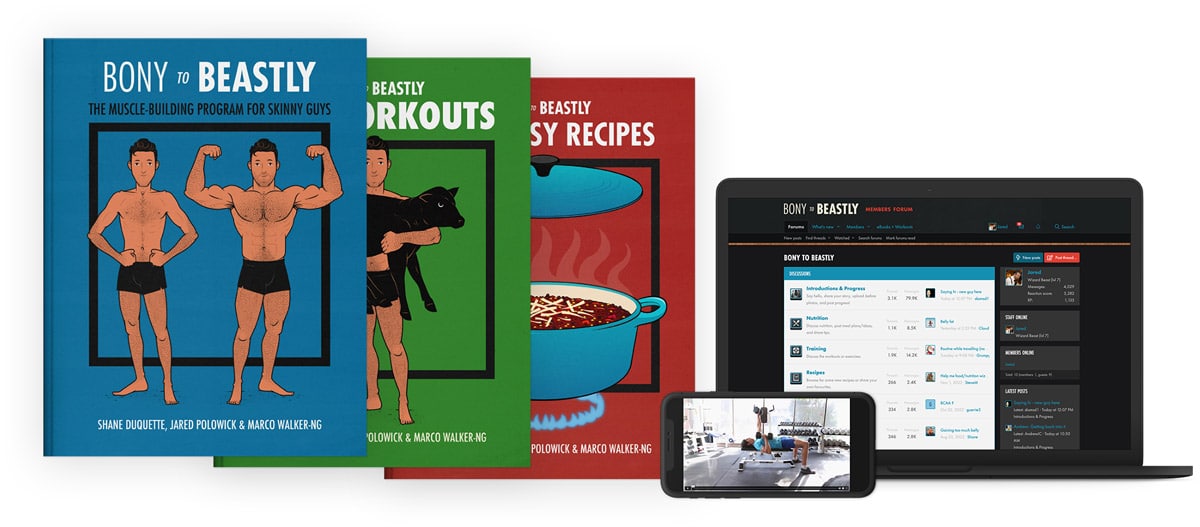
If you want us to walk you through the entire process of building muscle, check out our Bony to Beastly Program. It includes a 5-month dumbbell workout routine, diet guide, recipe book, tutorial videos for every exercise, and one-on-one support from us in our online community.
Alright, that’s it for now. If you want more muscle-building information, we have a muscle-building newsletter.



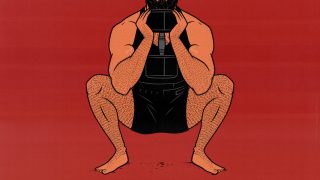
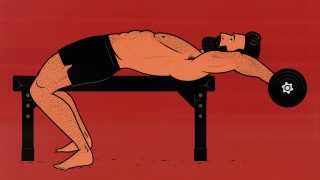
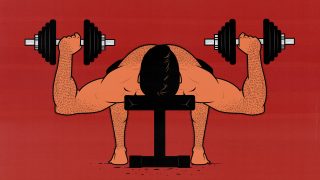
Just a quickie question on dumbbell skullcrushers. Does grip matter? From a mechanics and triceps focus standpoint, should palms be facing in or pronated? I’ve done both, but wonder if the weight through the entire motion is less at a certain point when palms face in as opposed to pronated grip.
I prefer dumbbells to the bar since it forces me to recruit a bit more stabilizers and prevents one side from compensating for a weaker side.
Your triceps don’t care about supination or pronation, so should choose a grip that feels good on your joints and tendons, and make sure your grip strength doesn’t limit you. If you fully supinate (reverse grip), your grip might fail before your triceps do. Pronated and facing in (neutral grip) are both good options.
With dumbbells, I find it feels more natural to use a neutral grip (with palms facing each other).